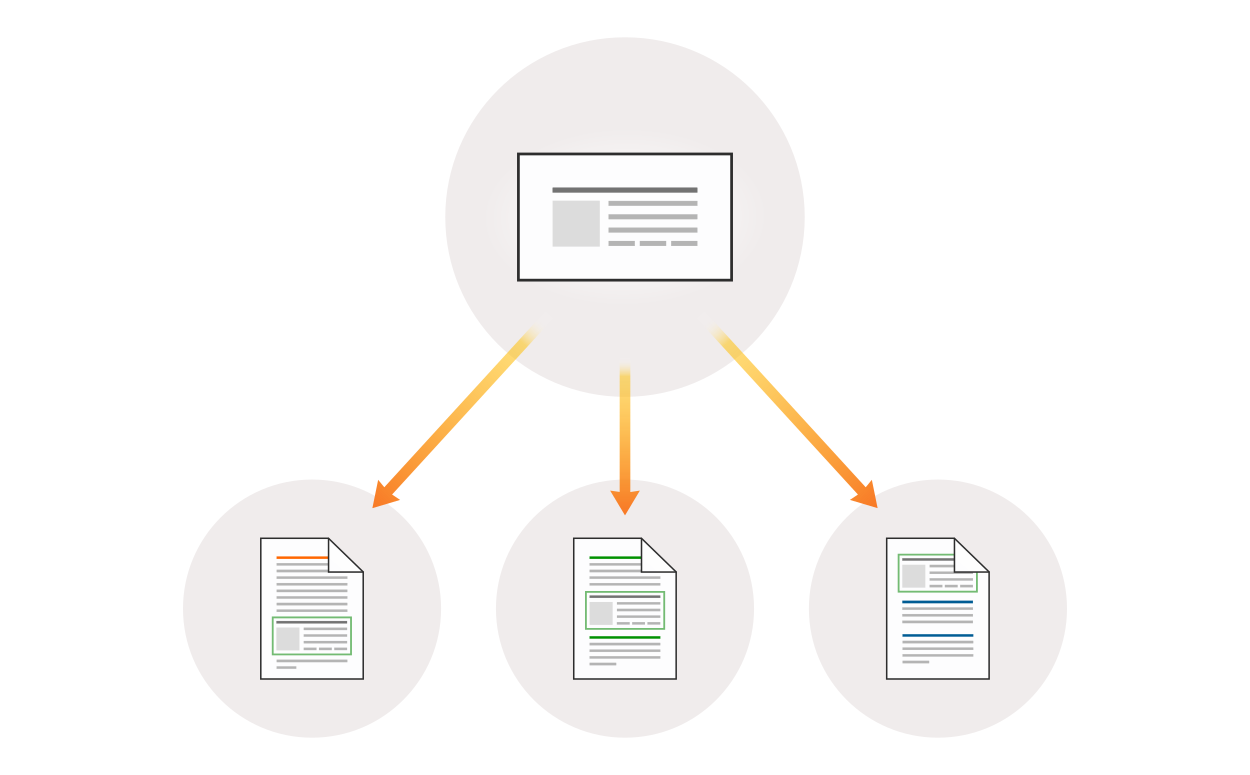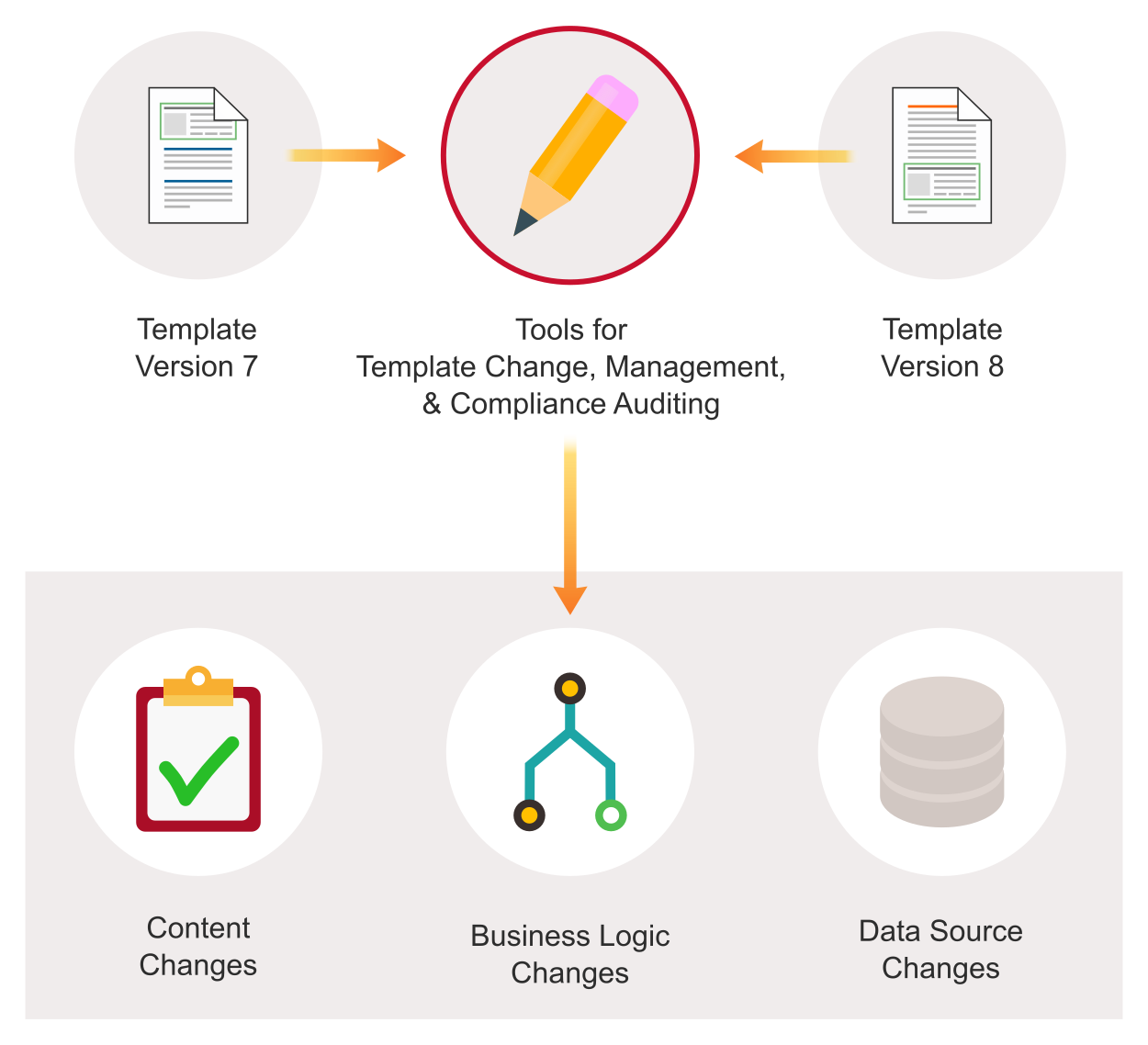Depending on how many templates your organization has, you may or may not need to worry about Template Management. The more templates you have and the more people need access to them, the more sophisticated system you'll need to put in place to control who can edit what, who can use each template and how, and to track the history of changes. If you have two or more templates, you may need the ability to share content among your templates so that you only make a change once.
What happens when you have fifty templates that all share one logo, address block and the terms and conditions? Do you need to make the same change fifty times?
Some organizations have just one template, while some can have thousands. Even if you manage only one template, it is important to control and track who can make changes and what these are. That applies not only to content - which can be tracked and compared using standard document comparison tools, such as the document compare in MS Word or other, more specialized tools - but also to changes to business logic and data sources. In automated templates, business logic determines the language ultimately included in produced documents. If rules are modified, entirely different sections may end up in the produced document. Similarly, if someone changes the data source that a template is connected to, you may end up with different data flowing into templates. This can result in unexpected content shown in the documents.

Multiple templates use one piece of content. How many times does it need to be edited?
The reality of many organizations is that templates are stored in shared network folders. These rarely provide good versioning, and very little to facilitate tracking of changes or access by multiple users. Even the basic check-in and check-out functionality is missing. Network folders can work when there are very few templates, and only one or very few people have access to the templates, and the ability to make changes. To prevent the use of incomplete, "work-in-progress" templates, these often need to be published in another location.
The growing number of templates, and an increased turnover of users and editors, present additional challenges, as network folders lose the ability to cope with these demands. Where traditional document management systems can no longer cater to these needs, specialized template management capabilities are required. These typically include:
- Tracking high number of versions in the perpetual process of template development and improvement
- Ability to track content changes
- Ability to identify changes to business logic
- Ability to identify changes to data sources
- Support publishing, deferred publishing, and template obsolescence
|
- Support check-in and check-out of templates and multiple people accessing templates simultaneously
- Ability to maintain content that is shared by multiple templates and maintain/modify it in one place
- Ability to centrally manage business rules and data structures and make them available to multiple templates
- Ability to track template usage
|
Enterprise-scale document automation software comes with template management abilities. These support creation, maintenance, and usage of many templates by many people and, with equal importance, enable templates to share content, business rules, and data structures.
Making traceable updates to the logo, address, and Terms and Conditions across fifty documents can be easy – traceable, accurate, and efficient changes can be made and applied in a single step.

It is important to be able to track and audit changes made to automated templates.
The practical results of leveraging good template management practices can be impressive. One of ActiveDocs' clients, Cobank, a major US wholesale bank, reduced the number of their templates from 350 down to 83. This significantly decreased the effort needed to make template modifications (see case study). Another client, New Directions Behavioral Health, a major behavioral health care provider, started with ninety templates. After the deployment of ActiveDocs, they ended up with three (see case study).
In the next section we'll have an in-depth look at a few more real-life uses for document automation, referencing client deployments of various sizes.

